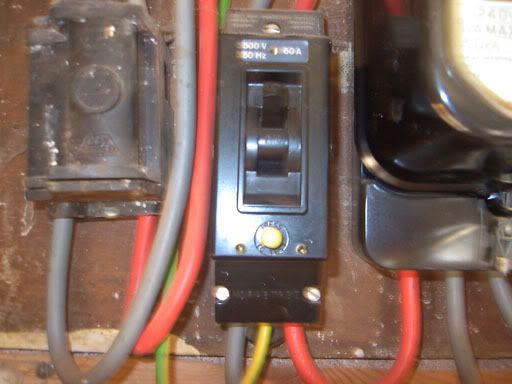Hi,
I think you'll find that a N - E fault on a circuit would affect the operation of an RCD under L - E fault conditions..........just not in the manner that you are all thinking.
Picture this, (or draw it

), an existing neutral/earth fault on a socket circuit.
You go to plug in your nice shiny, stainless microwave.....not noticing the frayed cable and exposed line conductor touching your hand.
Your other hand is resting on said microwave.
There's your L - E fault - but what happens to the current?
It goes via
you to the microwave casing, down the CPC of the socket circuit and back down the neutral via the E - N fault.
Now there
will be an imbalance, because
some of the current will obviously flow to earth, but how will it affect the operation of the RCD?
Then think about the same scenario with a high resistance earth - i.e. TT.
Anyway, back on topic:
1 ........Indeed, an RCD offers NO protection to a person who comes in contact with both live and neutral conductors.
Not necessarily true - depending how well insulated your footwear is (or not), some of the current is going to flow to earth and create an imbalance.
2...An RCD will NOT trip if a two-core cable, such as that used to power many garden tools (mowers, strimmers, hedge cutters etc.) is cut.
Again, it could do, it just depends.
3...A, say, 30mA RCD does NOT limit to 30mA the current which can flow through a person in contact with live and earth. The current which flows through the person depends on circumstances, and may be much higher than 30mA. What the RCD does do is limit the duration of flow of a current of 30mA or greater can flow to a sufficient extent that serious injury/death will often (but not always) be avoided.
Obviously a 30mA RCD does not limit the current flowing from Line to Earth to 30mA........otherwise why would we bother with the 5I test?
I kind of agree with what you are saying, but I fear you may be creating your own misconception here.
Unless I've been wrong all my life, I do believe that current builds up from '0' to 'whatever', dependant on the 'Potential Difference' and the 'resistance' - In other words, we don't just instantly get 16000 Amps of fault current flowing the very millisecond that we touch 'Line' to 'Earth'............it's a build up, even if it's a very fast one.
So yes, a 30 mA RCD doesn't restrict the flow of current to 30mA - but I think it does restrict it to a degree.....and it
is the disconnection time that counts.
4... Similarly, a correctly-installed RCD does NOT limit the voltage difference which can exist between the installation’s ‘earth’ system (CPCs) and true earth during fault conditions (‘touch voltage’) to 50V. Again, all it does is limit the duration of any ‘touch voltage’ greater than 50V (in practice, usually also the duration of lower voltages).
I don't really know how to argue this one except to say that there must be a reason why Zs for a 30 mA RCD has to comply with the 50V equation - otherwise, using 230V, you could have a Zs of 7666 ohms??
5... Note that, in relation to any circuits protected by single-pole RCBOs in the consumer unit, this discrimination will only exist in relation to live-earth faults, not neutral-earth ones.
I don't actually understand what you are trying to say here.








